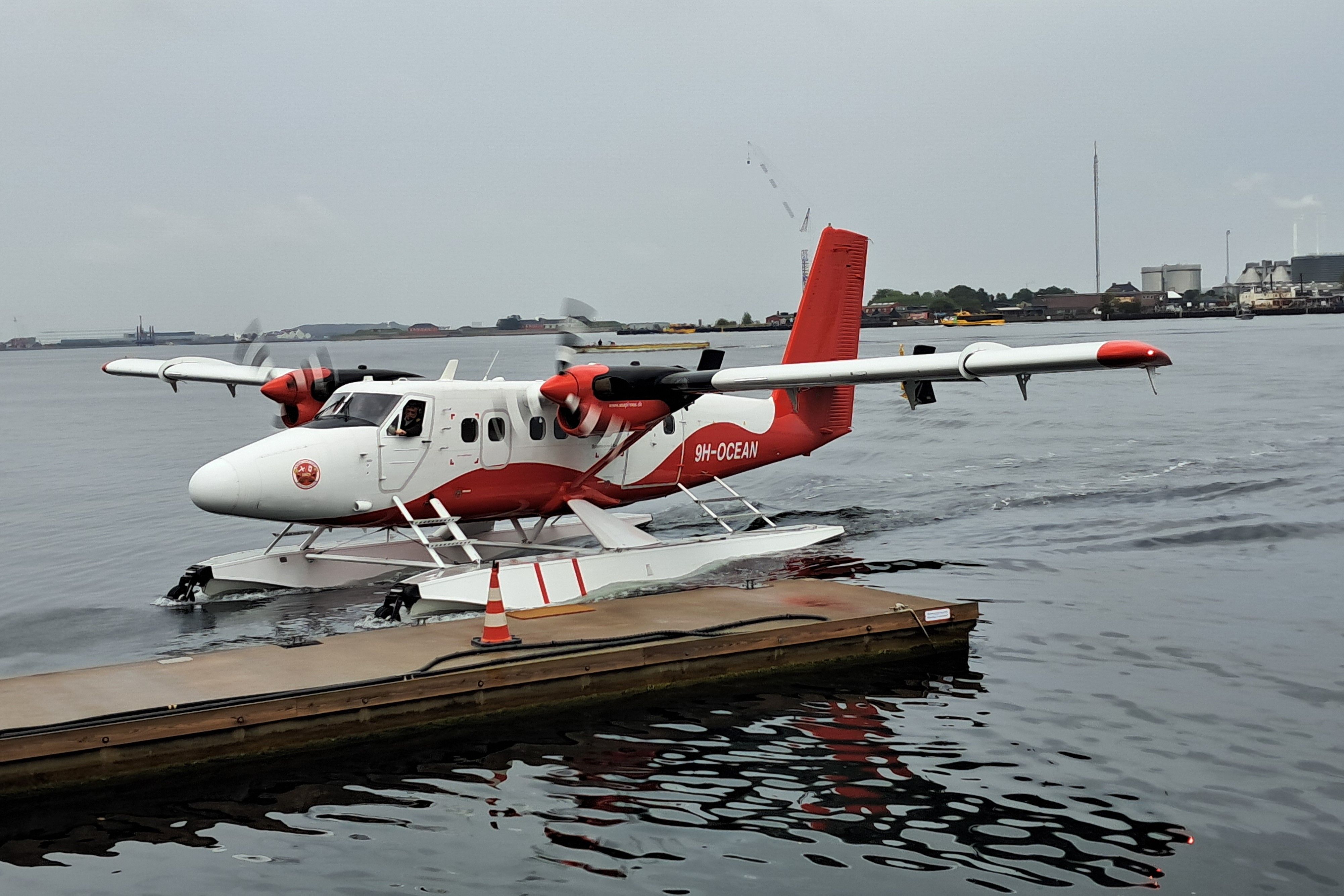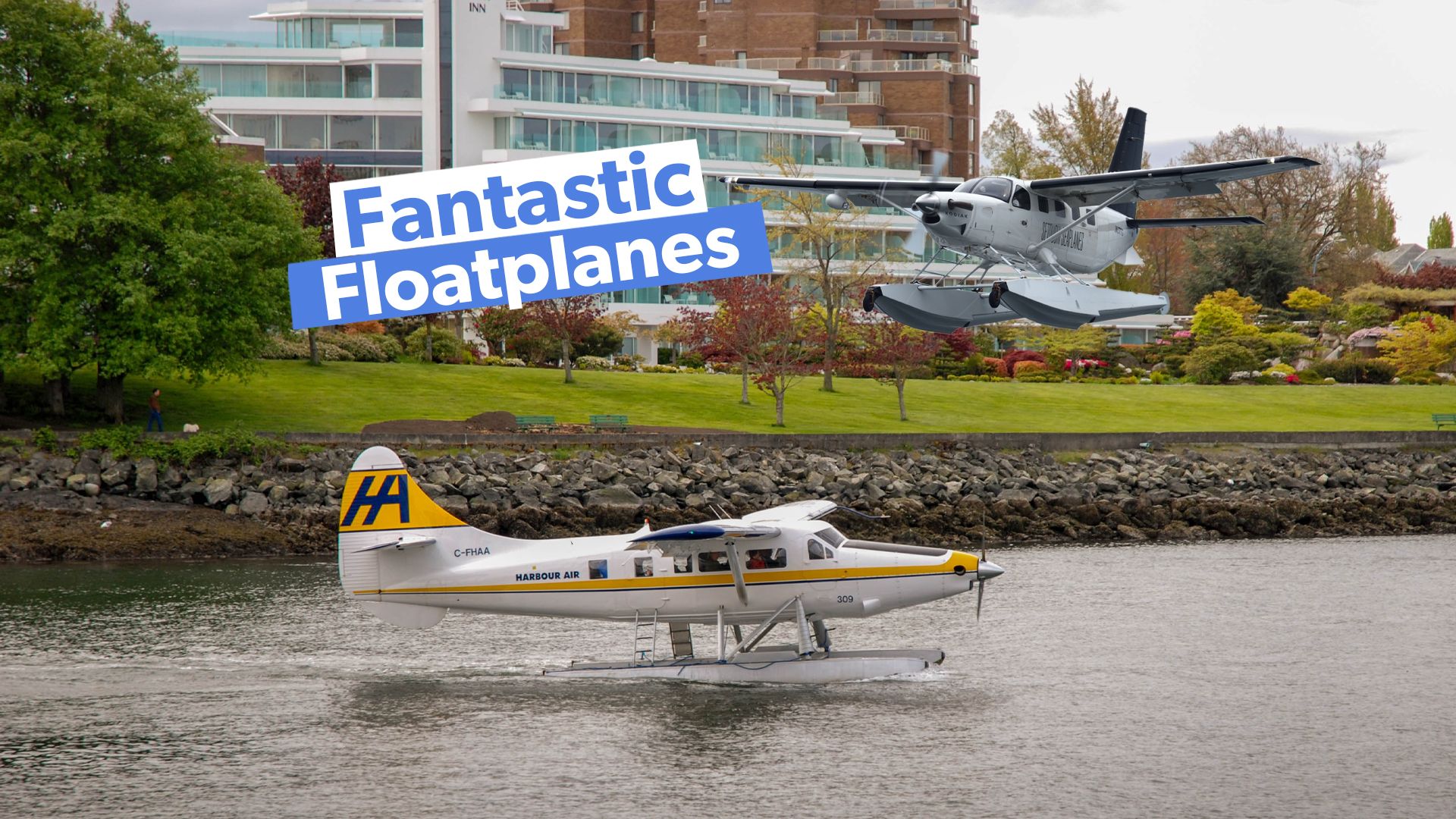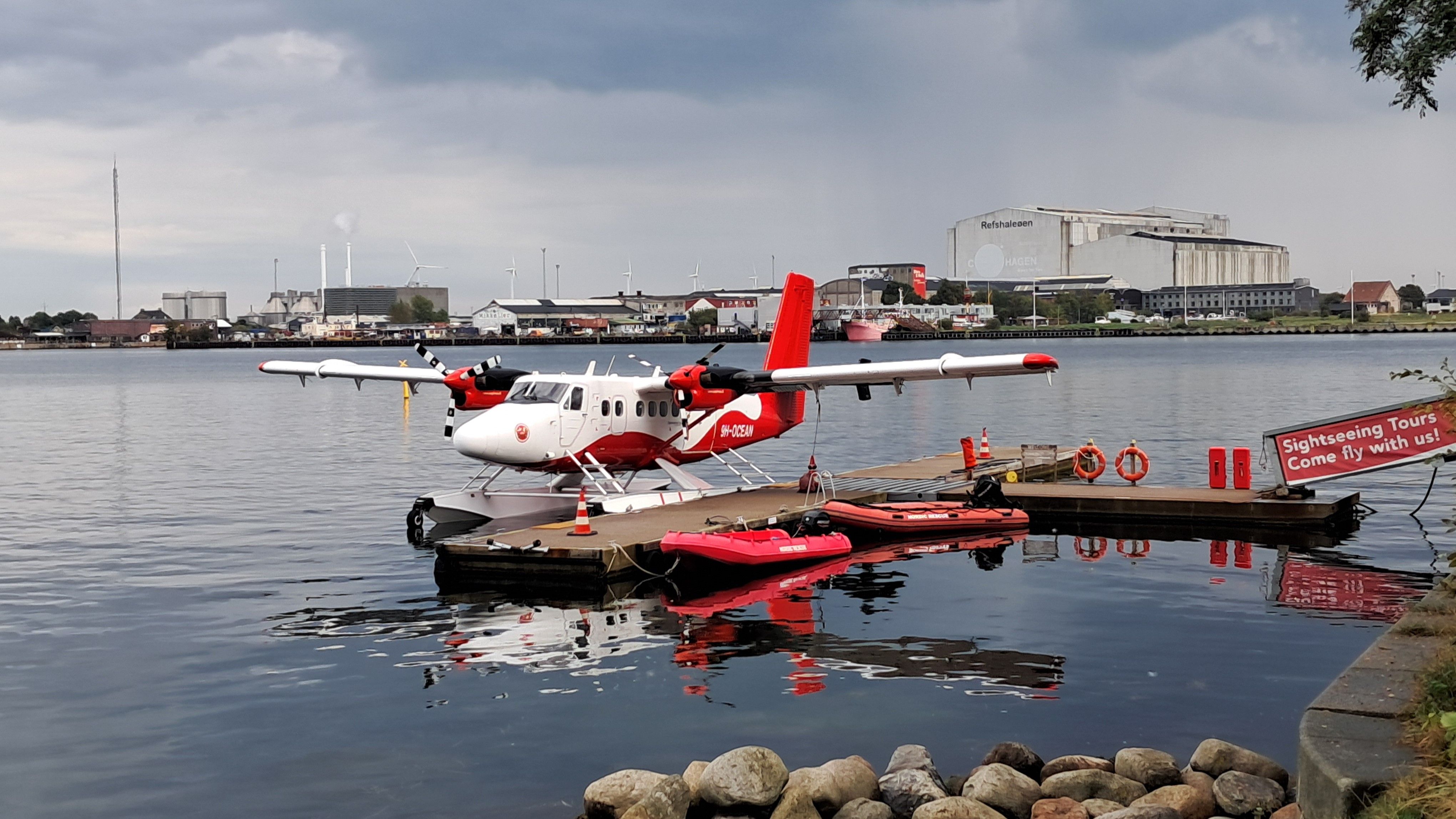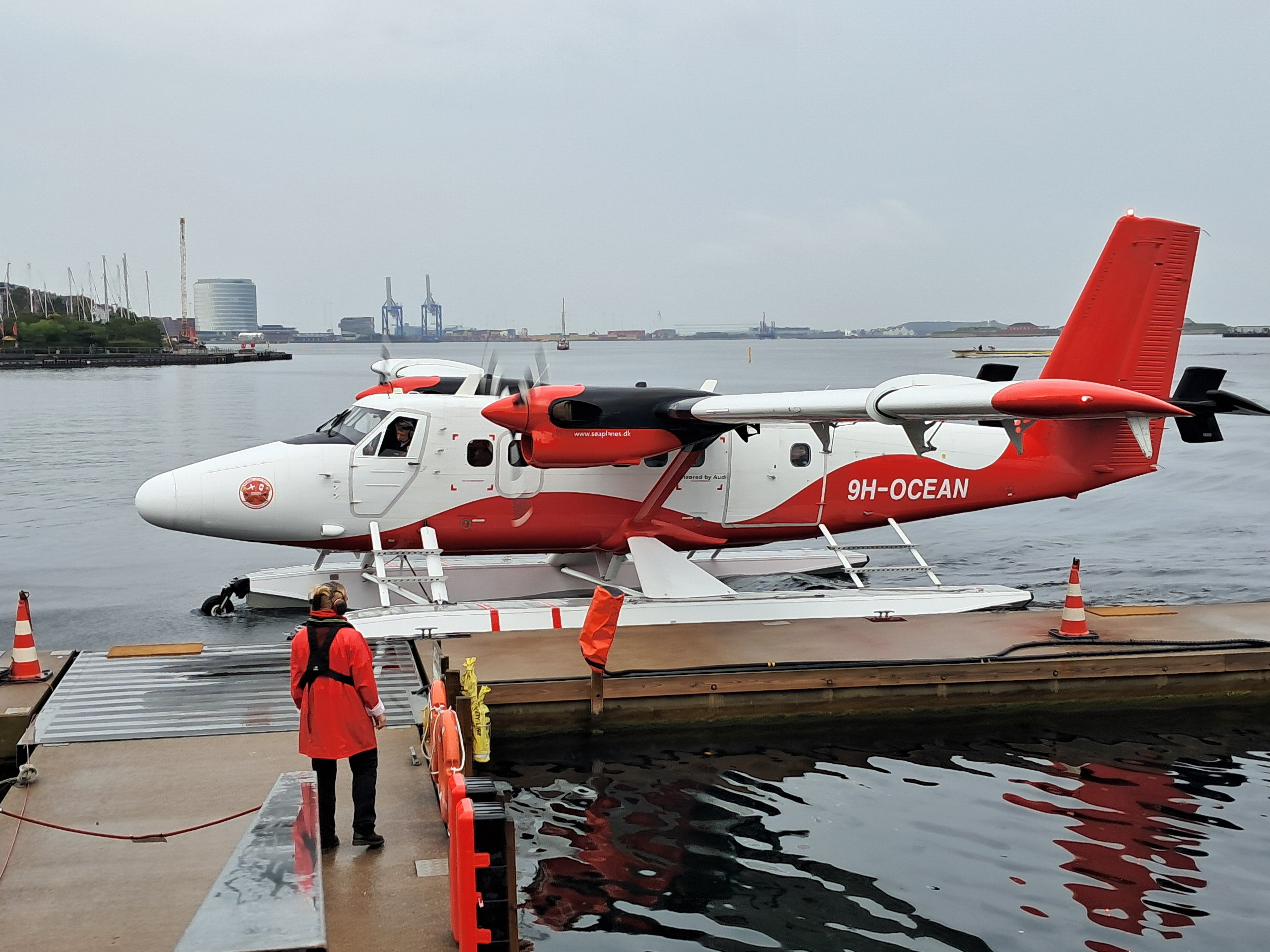For the vast majority of modern-day airline passengers, any given flight will take off from one solid-ground runway and land on another. However, land-based airports do come with certain limitations, as their sheer size means that it can be difficult for them to be located near the center of the city that they serve. However, there is a novel but practical solution to this in the form of using ‘nature’s runways.
The runways in question are bodies of water. With many large settlements being located on rivers or by the sea, the use of seaplanes and floatplanes can be a handy way of accessing central locations without the need for infrastructure investment. The operational flexibility of these planes is loved by airlines and pilots, as Simple Flying recently had the chance to hear about at a media event in Copenhagen.
Seaplanes vs floatplanes
Before delving into the operational advantages of floatplanes compared to regular land-based fixed-wing aircraft, it is first important to understand how they differ from seaplanes. Indeed, while it would be understandable to assume that these two terms are synonyms that can be used interchangeably with one another, there is one key difference that sets them apart structurally and visually.
Photo: Jake Hardiman | Simple Flying
When it comes to seaplanes, these can take off from and land directly on the water without the installation of additional structural features such as pontoons. To put it simply, the belly of these aircraft is its main point of contact with the sea or river when it isn’t flying in the air. As Simple Flying explored earlier this year, famous examples of such planes include the Dornier Do X and Short Sunderland.
On the other hand, according to Air Tunilik, floatplanes are defined by the fact that their bellies are not supposed to come into direct contact with the water. Instead, these aircraft are fitted with pontoons to provide flotation, with these housing external landing gear for land-based operations and giving greater clearance. Confusingly, my recent flight with Nordic Seaplanes was on a Twin Otter floatplane!

Related
Flight Review: Sightseeing In Copenhagen On A 46-Year-Old Nordic Seaplanes Twin Otter
The flight was short but sweet, and offered spectacular views of the Danish capital city.
Popular with pilots
The aforementioned Nordic Seaplanes flight was part of a wider media event centered around the announcement of the airline’s Memorandum of Understanding with Elfly to acquire up to 15 all-electric ‘Noemi’ aircraft. However, beyond the announcement itself, the talks held by the various stakeholders present revealed a lot, including the various operational merits of floatplanes.
Photo: Jake Hardiman | Simple Flying
Tomas Brødreskift, who serves as Elfly’s Chief Technical Officer, provided particularly valuable insight into this fascinating topic. Reflecting on the benefits of this airframe structure in comparison to the all-in-one body used by certain seaplane designs, Brødreskift stated that:
“The float solution is a very good one when you’re in the water, so pilots love the floats. I’m a seaplane pilot myself, I also fly floatplanes, and you’re high off the water when you’re taxiing around. You have a good overview, which you need in the water, and then, when you come into the pier, the floats help you, and you can work your way around.”
Photo: Jake Hardiman | Simple Flying
As it happens, the benefits of the floats don’t just extend to when pilots are operating the aircraft from inside its cockpit. Indeed, Brødreskift adds that “it’s sort of an auxiliary system that you have next to the plane, and you can walk on the floats.” Indeed, as pictured above, these floats form the base of the ladders with which pilots and passengers board and disembark the aircraft. Elfly’s CTO noted:
“You can step onto the floats, even at speed, when you’re on the water. This is quite practical if you’re alone on the floatplane, for instance, to be able to get out and grab things.”
Not a perfect solution
That being said, floatplanes aren’t a one-size-fits-all solution to coastal air mobility, as evidenced by the fact that Elfly opted for a belly-landing seaplane design for its electric ‘Noemi’ aircraft rather than utilizing auxiliary pontoons and floats. Fundamentally, there are still certain obstacles posed by floatplane structures.
Indeed, manufacturers must make the auxiliary components worthwhile, as Brødreskift notes that “when you leave the water, you’re bringing all the auxiliary systems with you into the air.” This creates additional drag compared to the smoother airframes of belly-landing seaplanes and burdening the aircraft with extra weight. Brødreskift went on to explain to the gathered media that:
“With the floats and the displacement volume you’re carrying with you, it’s almost like carrying a second fuselage through the air. That’s a lot of resistance and a lot of drag that you have to pull through the air, and the weight that you add also lowers the capability, so you have less payload capability on the plane.”
Still a perfect fit for the right market
Nonetheless, where airlines can make floatplanes work in terms of consistent passenger demand, these drawbacks are outweighed by the operational advantages of such aircraft. For Nordic Seaplanes, the ability of the carrier’s Twin Otters to serve city centers is ideal for commuters in Copenhagen and Aarhus, with Lasse Rungholm, one of the airline’s co-founders, telling the assembled press pack that:
“You can actually go from Aarhus to Copenhagen, have a few meetings, and get back and pick up your kids at kindergarten or participate in events in the afternoon.”
Another market where floatplanes have become a hit with airlines, their pilots, and their passengers is the Maldives, where such aircraft use nature’s runways to enable quick and convenient interisland travel. This is evidenced by the growth of Trans Maldivian Airways, which Nordic Seaplanes co-founder Lars Erik Nielsen also founded. The airline has come a long way in 33 years. As Nielsen concludes:
“In 1991, I founded a seaplane operation with one airplane and five people. Today, we have 67 airplanes and 1,400 people.”



